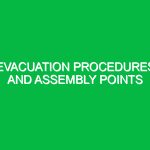Burns are among the most common injuries encountered in both workplace and home settings. They can result from various sources such as fire, chemicals, electricity, and hot surfaces. Understanding first aid for burns is crucial not only for immediate response but also for long-term recovery and safety. This article aims to delve into the significance of first aid for burns within the context of Health, Safety, and Environment (HSE), exploring potential hazards, safety precautions, and relevant regulations.
Understanding Burns and Their Types
Before diving into first aid practices, it’s essential to comprehend what burns are and their classifications. Burns are categorized based on the depth of tissue damage:
1. First-Degree Burns
These burns affect only the outer layer of skin (epidermis). Symptoms include redness, minor swelling, and pain. Sunburn is a common example of a first-degree burn.
2. Second-Degree Burns
Involving both the epidermis and the underlying layer (dermis), second-degree burns can cause blisters, severe pain, and swelling. They may result from scalding liquids or brief contact with flames.
3. Third-Degree Burns
These burns penetrate through the skin into the underlying fat, potentially affecting muscles and bones. The skin may appear white, charred, or leathery. Third-degree burns usually require medical attention.
4. Fourth-Degree Burns
The most severe type, fourth-degree burns extend through all layers of skin and into underlying tissues, potentially reaching muscles and bones. These burns can be life-threatening and necessitate urgent medical care.
The Importance of First Aid for Burns in HSE
First aid for burns plays a critical role in mitigating the injury’s effects. Proper initial treatment can alleviate pain, prevent infection, and limit scarring. In the context of HSE, understanding and applying the right first aid practices can reduce workplace accidents and enhance employee safety. For instance, a factory worker who suffers a chemical burn needs immediate attention, not only to manage the injury but also to ensure that the chemical does not pose further risks to others in the vicinity.
Identifying Hazards and Risks Associated with Burns
Burns can occur in various environments, each with unique hazards. Here are some common situations where burn risks are prevalent:
1. Workplace Hazards
In industrial settings, exposure to hot surfaces, flames, and chemicals poses significant risks. For instance, workers in a metal fabrication shop may encounter hot metals or equipment that can cause severe burns.
2. Domestic Hazards
In homes, burns often result from kitchen accidents, such as boiling water or hot oil. Children are particularly vulnerable, often leading to scalding injuries.
3. Environmental Hazards
Natural disasters, like wildfires, can lead to severe burn injuries. Understanding the environmental risks and preparing accordingly can save lives.
4. Electrical Risks
Electrical burns can occur when a person comes into contact with live wires or faulty equipment. These burns may be internal, making them particularly dangerous.
Safety Precautions and Best Practices for First Aid for Burns
Knowing how to respond effectively to burns is vital. Here are safety precautions and best practices:
1. Assess the Situation
Before providing first aid, ensure the scene is safe. If the burn was caused by a chemical or electrical source, eliminate any further danger. This might mean turning off equipment or moving away from flames.
2. Remove the Source of Burn
If safe, remove the source of the burn. For instance, if clothing is on fire, smother it with a blanket or roll the person on the ground to extinguish the flames.
3. Cool the Burn
For first-degree and second-degree burns, the immediate step is to cool the burn with running cool (not cold) water for 10 to 20 minutes. This helps reduce pain and swelling. Avoid ice or very cold water, as it can worsen the injury.
4. Cover the Burn
After cooling, cover the burn with a clean, non-stick dressing or cloth. For second-degree burns, a sterile gauze bandage can help protect the area from infection. Avoid using cotton balls, as they can leave fibers in the wound.
5. Pain Management
Over-the-counter pain relief, such as ibuprofen or acetaminophen, can help manage pain. However, avoid applying ointments or creams on severe burns without medical advice.
6. Seek Medical Attention
For second-degree burns larger than three inches, third-degree burns, or burns on the face, hands, feet, or genitals, seek professional medical help immediately. It’s crucial to recognize when the injury is beyond the scope of first aid.
Regulations and Standards Governing First Aid for Burns
In the HSE domain, several regulations and standards guide first aid practices, including burns. Awareness of these can enhance compliance and safety:
1. OSHA Guidelines
The Occupational Safety and Health Administration (OSHA) sets forth requirements for workplace safety, including first aid training and the availability of first aid supplies. Employers are mandated to have at least one trained first aid provider available at all times.
2. ANSI Standards
The American National Standards Institute (ANSI) provides guidelines on first aid kits and training. It emphasizes the importance of equipping workplaces with adequate resources to respond effectively to burn incidents.
3. Local Regulations
Many local jurisdictions have specific requirements regarding first aid training for employees, particularly in high-risk industries. Familiarizing oneself with these can prevent legal repercussions and enhance workplace safety.
Real-Life Application: A Case Study
Consider a scenario in a manufacturing plant where a worker accidentally spills hot oil on their arm. The immediate response involved:
- Calling for help to ensure the worker was moved from the hazardous area.
- Using running water to cool the burn for 15 minutes while assessing the severity.
- Covering the injury with a sterile dressing and advising the worker to take an over-the-counter pain reliever.
- Transporting the worker to a medical facility for a thorough evaluation.
This incident highlights the importance of prompt first aid for burns and the role of proper training in emergency situations.
Conclusion
First aid for burns is a critical skill that can significantly impact outcomes in emergency situations. Understanding the types of burns, recognizing hazards, and knowing how to respond can save lives. In the context of Health, Safety, and Environment (HSE), prioritizing first aid training and adhering to regulatory standards can foster a safer workplace. Remember, effective first aid begins with preparation and knowledge, ensuring that you are ready to respond when it matters most.


